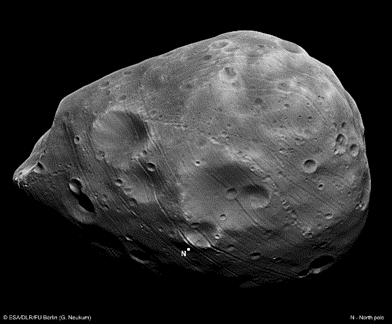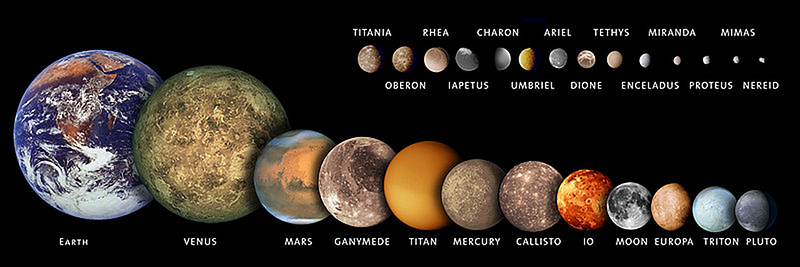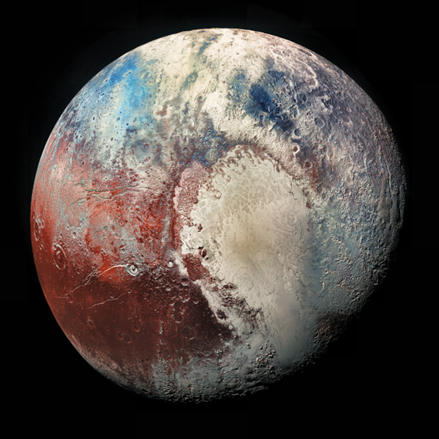The Odd, Frigid Moon That Defies Expectations
Written on
Welcome to Triton, the most unusual moon in our solar system, where peculiar characteristics abound. If we were to observe our Sun from the far reaches of the solar system, it would appear as a mere twinkling point of light. Here, the Sun's ghostly rays illuminate Triton's bizarre landscape, marked by formations resembling the wrinkled skin of a cantaloupe, unique in the solar system. This moon's surface is frigid, significantly colder than any other celestial bodies that orbit our Sun.
Throughout this alien terrain, icy geysers erupt, spraying dark slush into the thin atmosphere, some reaching heights of up to eight kilometers. A fierce nitrogen wind sweeps these icy plumes across the surface, while clouds of frozen nitrogen drift in the dim sky.
Triton was last closely observed by Voyager 2 in August 1989, providing a glimpse of about 40% of its surface. Recently, the James Webb Space Telescope offered a stunning view of Neptune, which glows with an ethereal white light and is adorned by delicate rings.

This celestial portrait captures Neptune's near-infrared light, revealing dark methane gas and the glimmering clouds of methane ice. However, the striking blue object in the image is not a distant star; it is Triton, reflecting sunlight due to its frozen nitrogen surface.
Several aspects make Triton remarkable, hinting at its true nature.
- You’re on the Wrong Path!
Triton orbits Neptune in a retrograde manner, akin to a vehicle driving against traffic on a one-way street. Its orbit is tilted by 23 degrees relative to Neptune's equator.
In contrast to the orderly movement of the planets and most moons in our solar system, Triton stands out. If observed from a 'northern' perspective, we would see the planets and their moons moving anti-clockwise, following the Sun's rotation in nearly circular orbits within the same plane.
Most of the small, irregularly shaped satellites around the outer gas giants, like Jupiter and Saturn, exhibit chaotic orbits, often tilted and elongated. These moons were likely captured from the leftover debris of the solar system's formation, unlike the regularly orbiting moons.

Given Triton's large size and retrograde orbit, it raises a question: why is there only one significant moon orbiting in reverse?
- A Large World
Triton is the second largest moon in relation to its planet, measuring about 2,700 kilometers in diameter, which is approximately 78% of our Moon's size. It ranks just behind our Moon in size compared to its host planet, Neptune.

Interestingly, Pluto, which was reclassified from a planet, is smaller than Triton.
- Subsurface Water Exists
Despite Triton's surface being frozen at -235 °C, Voyager 2 discovered around fifty geysers jetting slush high into the atmosphere. These cryovolcanoes release a cold, slushy mix from beneath the icy crust, indicating the presence of liquid water below.
This geological activity suggests that Triton has a significant amount of liquid water lurking beneath its surface, which could be a vital indicator of potential microbial life. The apparent warmth beneath the icy exterior hints at past geological processes that could have heated the interior.
The absence of large craters on Triton's surface indicates ongoing cryovolcanic activity, where ice lava fills in impact marks.
How did Triton acquire this warmth? It likely had an elliptical orbit in the past, causing gravitational interactions with Neptune to stretch and heat its interior.
However, this raises another question: how did Triton, a large moon, develop such an elongated orbit?
OK, Where is This Leading?
The evidence points towards one conclusion: Triton was once a small planet that was captured by Neptune. If it had remained in orbit around the Sun, it could have been classified as the tenth planet of our solar system.
It might also have originated from the Kuiper Belt, a region of icy bodies beyond Pluto, where several dwarf planets have been discovered since 2005. Triton stands out as the largest known captured dwarf planet.
Yet, a lingering question arises.
How Does a Dwarf Planet Get Captured?
The gravitational force is the key to capture, but a dwarf planet moving swiftly through space would typically possess too much kinetic energy for Neptune to simply capture it.
There are two main scenarios: Triton could have slowed down due to a collision with another moon, or a third body could have influenced its trajectory. The early solar system was chaotic, with interactions between celestial bodies being common.
A three-body encounter between Neptune and two binary dwarf planets could have resulted in one being captured by Neptune while the other was flung into space.
Could Pluto be Triton's long-lost companion, ejected into the cosmos when Triton was ensnared by Neptune's gravity?

Pluto shares striking similarities with Triton, including mass, size, density, and surface composition. Both are locked in unusual orbits that differ from the eight planets.
The solar system has revealed many surprises, especially regarding moons and dwarf planets, which were once thought to be inert. We now know many are active worlds with hidden oceans beneath icy surfaces.
When will we send a dedicated mission to explore Triton? It has been thirty-five years since Voyager 2's flyby—it's time for a closer look at this captivating moon.